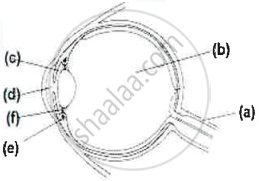Advertisements
Advertisements
Question
A student sitting on the last bench in the class cannot read the writing on the blackboard clearly but he can read the book lying on his desk clearly. Which of the following statement is correct about the student?
(a) The near point of his eyes has receded away.
(b) The near point of his eyes has come close to him.
(c) The far point of his eyes has receded away.
(d) The far point of his eyes has come closer to him.
Solution
The far point of his eyes has come closer to him.
As the far point of the eye is closer to him than normal, he can see nearby objects, but not distant objects, clearly.
APPEARS IN
RELATED QUESTIONS
What changes take place in the shape of eye-lens:
when the eye is focused on a distant object?
The human eye forms the image of an object at its ______.
What are the advantages of having two eyes instead of just one?
Name the following:
The pigmented circular area seen in the eye.
State the Function:
Vitreous humour
Write down the names of parts of the eye in the blank spaces shown in the figure.

Match the following:
| Column - I | Column - II |
| 1. Retina | a. Path way of light |
| 2. Pupil | b. Far point comes closer |
| 3. Ciliary muscles | c. near point moves away |
| 4. Myopia | d. Screen of the eye |
| 5. Hypermetropia | e. Power of accommodation |
Given below is a cross section of the human eye. Match the structures marked (a) to (e) with their correct functions:
Example: (f) - 6. Holds the lens in position
| Cross section of Human Eye | Functions | |
 |
1. | Protects retina |
| 2. | Regulates the size of the pupil | |
| 3. | Alters the shape of the lens | |
| 4. | Keeps the lens moist | |
| 5. | Transmits nerve impulses to brain | |
| 6. | Holds the lens in position |
Name the following:
Capacity of the eye to focus at different distances.
An aperture that controls the passage of light into the eye is ______.
